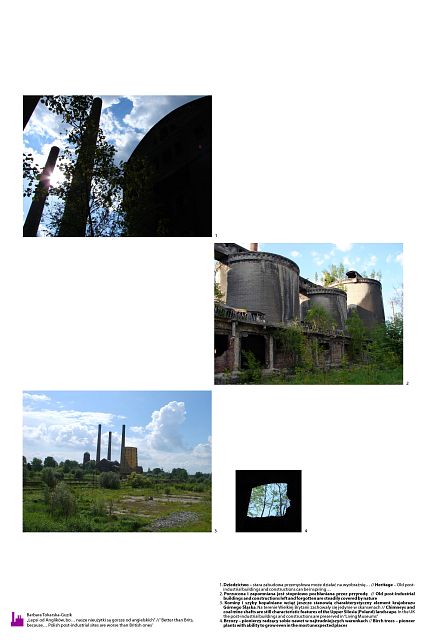
Description popularizing the research project
It seems to be easy: post-industrial mess should be cleaned as Polish and European legal regulations recommend renaturalization of devastated ecosystems. But is it possible to recreate the original pre-industrial look of such places? Chemical composition and structure of the soil as well as level of ground water and many other qualities have been almost irreversibly changed. That is why attempts of planned reconstructions of such sites most often fail unlike spontaneous colonization of new habitats by various plant, animal and microorganism species. Even the 19th century botanists noticed specific composition of plant species colonizing heavy metal ores dumps. Today's researches conducted in many European countries enable us to point out other habitats where certain plants clearly indicate presence of iron, copper, calcium and magnesium. Some of the plants simply absorb elements which contaminate the soil to store them in their leaves and stems in such concentrations that it would be lethal for other species. In this way they become healer plants and phytoremediation they perform is an important stage in restoring destroyed habitats.
These fascinating methods of the Nature are a training ground for botanists, zoologists and ecologists who visit post-industrial wastelands. Observations they make may help in planning future rehabilitations, renaturalizations and regenerations of habitats. But maybe it is better not to disturb the natural processes. Instead of this, let us protect these incredible places where vegetation reconquers dumps, settling tanks, quarries, shadowy mine shafts, chipped chimneys and abandoned buildings. Maybe in future scientists will write their dissertations on history of Silesian industry and the might of the Nature that healed 'the Black Triangle' of Silesia.
Abstract
The aim of the project is the comparison and assessment of different types of post-industrial sites in the parallel urban areas of Upper Silesia (Poland) and Black Country (UK). Detailed comparisons of examples of post-industrial and relict pre-industrial habitats were made in terms of nature, management, evaluation and designation. The project presents methods of natural management of post-industrial sites for nature conservation (protection of spontaneous succession stages, protection of unique flora and vegetation) and for restoration (natural-biological restoration). The author provides examples of particular projects, which are used in Poland and the UK (habitat restoration, habitat transportation and habitat creation). Special attention was focused on habitat creation as a significant method of habitat designing and the origin of plant mixture to be used.

